De-Amalgamation Bill Delivers Certain Uncertainty For Residents Still Campaigning To Get Their Councils Back
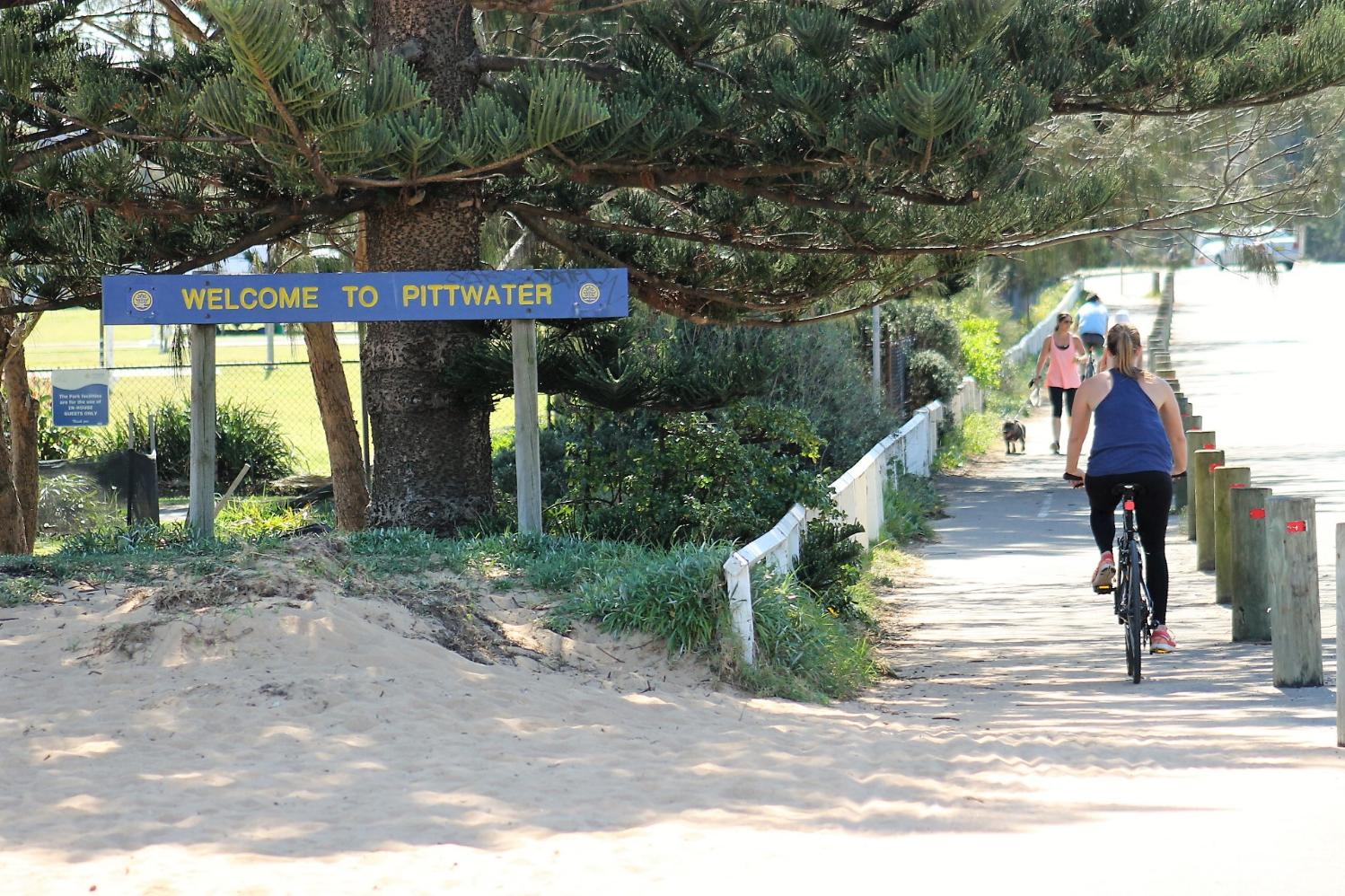
We consider the only future for this area and for the preservation of those ideals and policies for which we stand is to become an independent Shire … the need for this electoral reform has been clearly and sufficiently demonstrated to enable the Government to come to a decision and no longer forestall the issue. Put simply we call upon the Government to put the matter now to the people of A Riding to determine.
Warringah Shire Councillors Robert Dunn and Eric Green, representing A Riding - 1990
Photo: 'Welcome to Pittwater signage at North Narrabeen, where the Pittwater Council LGA commences, in 2013
The Hon. Ron Hoenig, Minister for Local Government, introduced the Local Government Amendment (De-amalgamations) Bill 2024 to the NSW Parliament on Tuesday February 6, stating in a release the NSW Government has introduced the new legislation will remove a major roadblock to council de-amalgamations and ensure local democracy is enshrined in the decision-making process.
'The amendments to the Local Government Act 1993, introduced to Parliament today, will provide a new legal pathway for NSW councils seeking to demerge, including those that already have de-amalgamation proposals under consideration.
The amendments repeal the legally flawed section 218CC of the Act and replaces it with a clear and democratic process.'
This follows years of failed policy making by the former government that left councils across NSW in limbo and failed to take into account the budgetary impacts for NSW taxpayers on proposed de-amalgamations.
Under the changes, councils wishing to de-amalgamate must develop a robust business case upfront. This must consider the financial impacts and council’s ability to fund de-amalgamation, long-term strategic plans and the service delivery capacity of the new demerged councils.
Councils will also be required to undertake community consultation on the business case.
Upon receipt from a Council, the Minister must forward a business case to the NSW Local Government Boundaries Commission.
Following a subsequent independent review by the NSW Local Government Boundaries Commission, the Minister may then approve a constitutional referendum with a compulsory vote, which would require majority support from local electors to proceed with a de-amalgamation.
In addition, the Government’s Bill provides transition arrangements for councils which have already been approved for demerger by the Minister.
The Minister for Local Government Ron Hoenig said:
“The forced amalgamation of NSW councils was a failed and expensive experiment.
“While the NSW Government strongly supports a clear process for councils and communities to exercise their democratic right to pursue de-amalgamation, we also have to be realistic about some of the challenges this brings.
“It’s why one of my main priorities as Local Government Minister has been to find a way to remove the roadblocks posed by the existing demerger process, and give communities the opportunity to decide.
“These amendments the Government has introduced provide a clear path forward for councils wishing to de-amalgamate, providing much more clarity for current and future proposals.
“However, it’s essential that local democracy is enshrined in the decision-making process so that councils and communities are fully informed of the financial and other implications of de-amalgamation.
“The amendments we have introduced are more pragmatic than other legislative proposals being put to Parliament and ensure de-mergers can be effectively managed by councils and that any new councils are financially sustainable.”
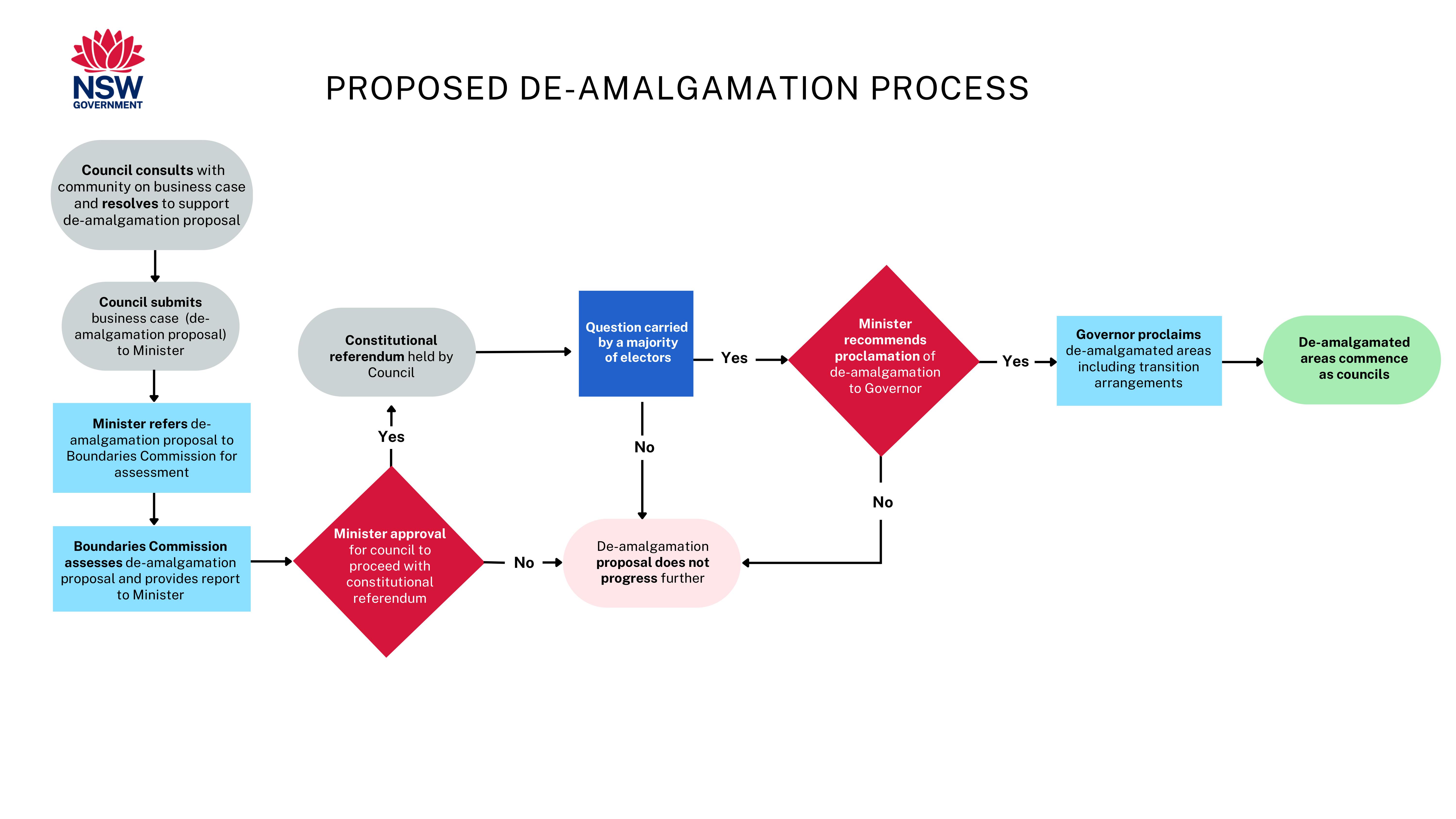
Flow chart of the proposed de-amalgamation process. Graphic supplied.
However, the NSW Government’s decision not to fund council de-amalgamations will make it virtually impossible for councils wishing to de-amalgamate, according to Local Government NSW (LGNSW).
President of LGNSW Cr Darriea Turley said it’s very disappointing that councils should have to carry the financial burden of unravelling amalgamated councils, which were forced on the community by the previous Coalition Government.
It also makes this the provenance of councils, some of which campaigned to merge with those that did not wish to be forcibly amalgamated with them, thereby still maintaining authority over the former councils and able to quash any process by those residents through block voting by aligned councillors.
The Manly-Warringah-Pittwater forced amalgamation is just one of those. Community members have been campaigning since merged with the council they'd only been free of for 20 years since they were subsumed back into what was then called, and still is 'Greater Warringah'.
Further, it was only due to a failure in Pittwater Council (before its forced termination) to follow through on a motion to seek legal advice with a view to joining in that litigation that saw Pittwater residents in their current dire state, as those that did fight on finally heard then Premier Gladys Berejiklian announce the government were abandoning plans to merge Councils in litigation against her government in July 2017. In February that same year the NSW Government walked away from regional council mergers, saying that municipalities challenging the policy in court would no longer be forced to merge.
“Our communities did not want these amalgamations, which were foisted on them, yet now they are being expected to pay to return to the former status quo,” Cr Turley said last week.
“This is sleight of hand by the new State Government, which knows that councils do not have the tens of millions of dollars required to de-amalgamate.''
Council demerger campaigners in Pittwater are bitterly disappointed by Labor government proposals revealed last week that will make it harder for smaller councils forcibly amalgamated to go their own way.
Protect Pittwater Association president Simon Dunn said amendments to the Local Government Act proposed by the NSW government will do nothing to restore democracy for minority councils such as Pittwater, amalgamated into the Northern Beaches Council in 2016.
Mr Dunn said Protect Pittwater wrote to Local Government Minister Ron Hoenig last September pointing out that the act was missing:
(a) A mechanism for a former area to be reinstated without a resolution of the new amalgamated Council of which the former area has a minority of Councillors to support such a resolution;
(b) an orderly procedure for assets and staff to be allocated when a former Council area was reinstated.
"The legislation introduced to Parliament this week by Minister Hoenig does nothing to address these two shortcomings and breaks the policy promise Labor took to the last two elections," Mr Dunn said.
"Instead, it perpetuates the endless deferring of decisions between the boundary commission and the minister, with neither being compelled to respect the strong desire of the former council residents to see their beloved Pittwater Council reinstated.
"Protect Pittwater instead urges NSW Labor to amend their proposed legislation to provide for a plebiscite of residents of a former council area - which was already found to be financially viable - to be the only mechanism required to reinstate that former Council.
"The desire for a demerger remains strong in Pittwater, where a statistically reliable survey conducted by the former council before the mergers showed 89 per cent of residents had wanted to remain in our standalone council.
"With the proposed legislation, we would be trapped in a situation where the six councillors representing the former Pittwater, can be outvoted on any issue the other nine."
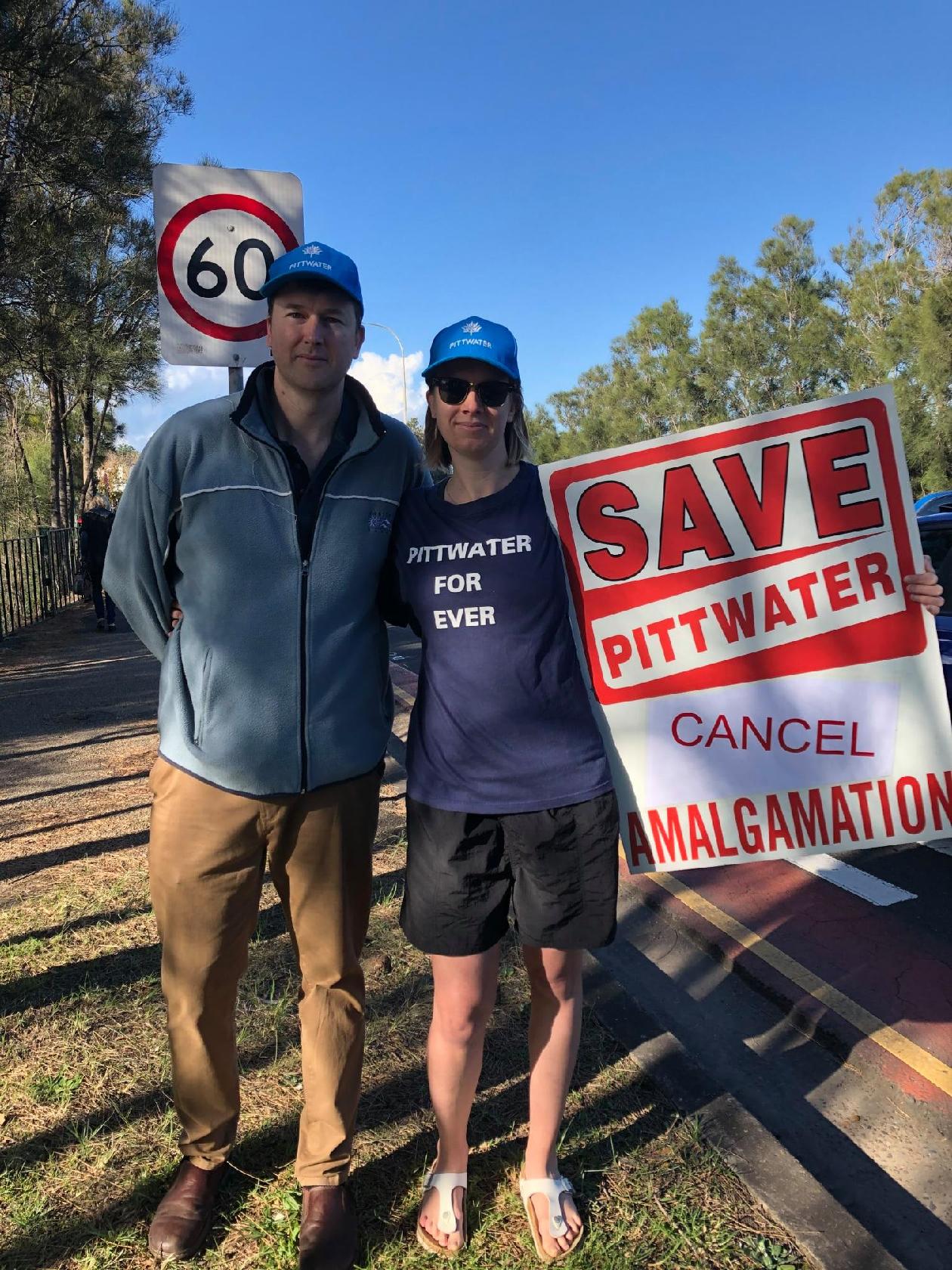
Simon and Hannah Dunn, children of Pittwater's First Mayor, Robert Dunn
NSW Government Introduces Bill To Prohibit Offshore Mining: PEP11 To Be Restricted To Commonwealth Waters If Licence Is Extended, Again
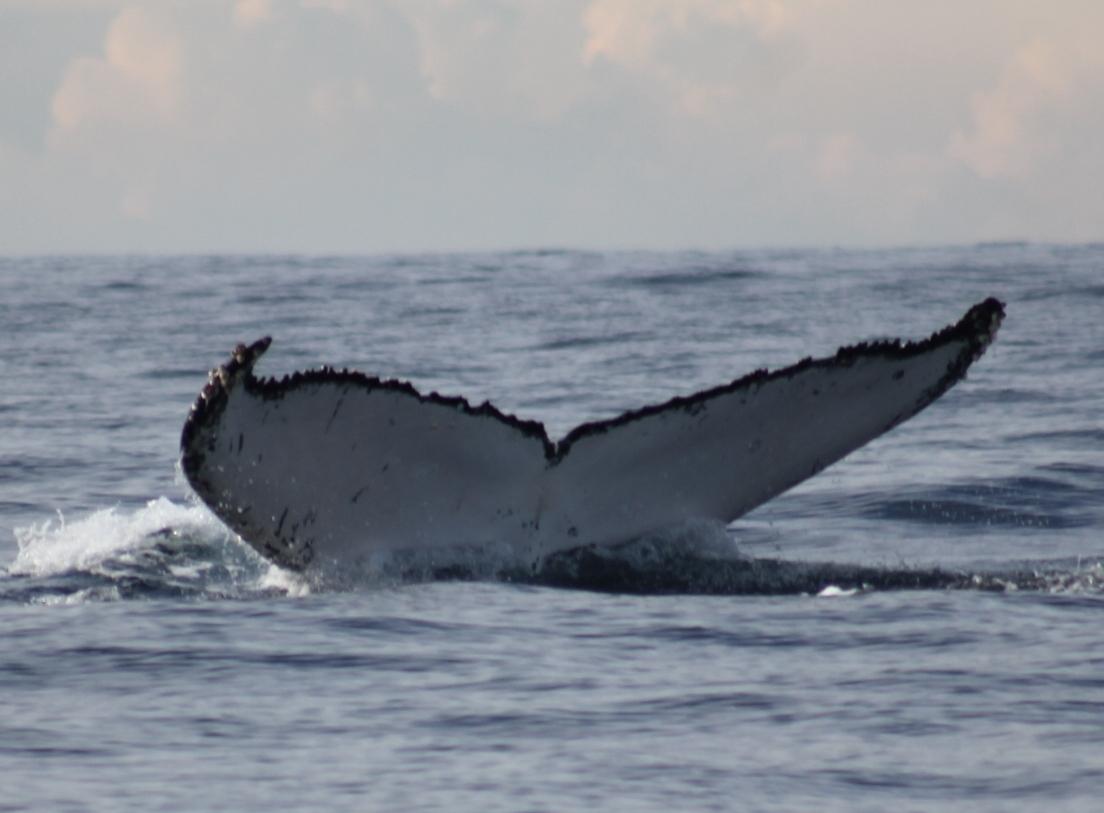
On January 31 2024 Asset Energy partner in the PEP11, Bounty Oil & Gas advised via a statement to the ASX that NOPTA has made a recommendation to Joint Authority on Bounty and Asset Energy’s applications for extension of their PEP11 licence.
Asset Energy, as major holder of PEP 11, states it is still actively preparing to drill Seablue1; exploration drilling for natural gas and greenhouse gas storage about 26km offshore and 30km from Newcastle.
The release statement also says;
‘’Polling conducted discovers a majority of voters in the Hunter region do not oppose drilling offshore Newcastle.’’
This also formed part of Advent Energy Limited’s submission to the Minerals Legislation Amendment (Offshore Drilling and Associated Infrastructure Prohibition) Bill 2023 Inquiry, tabled by Pittwater MP Rory Amon in June 2023.
In a survey of 1000 people by a group commissioned by the PEP11 proponents they found; ‘37% of respondents said they supported gas exploration offshore in the Hunter region, 41% neither supported or opposed the activity, and 22% opposed this local gas exploration’.
The inquiry looked into a range of issues, particularly whether the Bill raises any potential constitutional issues and unintended consequences, and its report sets out its findings and proposed recommendations.
On Tuesday February 6, The Hon. Paul Scully, NSW Minister for Planning and Public Spaces, introduced the Environmental Planning and Assessment Amendment (Sea Bed Mining and Exploration) Bill 2024 - long title: 'An Act to amend the Environmental Planning and Assessment Act 1979 to prohibit the carrying out of sea bed petroleum and mineral exploration and recovery and related development; and for related purposes.'
The prohibition does not apply to coastal protection works and certain dredging.
With the Minns government having the numbers in the NSW Parliament, this Bill is set to pass.
Proposed Schedule 10, section 2 prohibits a person from carrying out—
(a) sea bed petroleum exploration or recovery, or sea bed mineral exploration or recovery, in the coastal waters of the State, or
(b) other development within the State for the purposes of sea bed petroleum exploration or recovery or sea bed mineral exploration or recovery.
Proposed Schedule 10, section 3 enables regulations to be made to exempt the following from the prohibition—
(a) specified sea bed mineral exploration or recovery,
(b) specified development for the purposes of sea bed petroleum exploration or recovery or sea bed mineral exploration or recovery.
This is a Henry VIII provision. 'Henry VIII clauses' are clauses in a bill that enable ministers to amend or repeal provisions in an Act of Parliament using secondary legislation, which is subject to varying degrees of parliamentary scrutiny.
The Minister for Planning and Public Spaces, being the Minister administering the Environmental Planning and Assessment Act 1979, must consult with the Minister for the Environment before recommending the making of an exemption regulation.
Proposed Schedule 10, section 4 provides that certain authorisations under the Offshore Minerals Act 1999 and the Petroleum (Offshore) Act 1982 must not be granted or renewed if the authorisation relates to development prohibited under the proposed schedule.
No mention of Mr. Amon's stopping of anything extracted being denied a place to pipe into and onto NSW land though. No Mention of Assets' other stated position to use their project for carbon capture storage.
The next day, February 7th, Federal Greens Members were calling on the Prime Minister to follow suit. As stated by Greens spokesperson for healthy oceans, Senator Peter Whish-Wilson:
"Anthony Albanese talked a big game in opposition about stopping PEP11, but has yet to walk the talk since news broke that this toxic project could be back unless his government and the NSW government decide to stop it.
"What's the PM waiting for now the NSW Labor Government has given him political cover by introducing its own bill to kill the project? There's no plausible reason for this destructive project to go ahead; Australia doesn't need it and NSW coastal communities don't want it.
"PEP11 proponent Advent Energy wasted no time flagging its intention to proceed with the project despite the NSW Government's bill and in spite of immense community opposition.
"It's crucial the Albanese Government responds immediately and gives assurance to coastal communities that this project won't proceed. Setting a precedent for stopping destructive offshore oil and gas projects in our oceans should be something to celebrate, not cower from."
However, it is the The Offshore Petroleum Joint Authority (Joint Authority) for each state and the Northern Territory, comprising the responsible Commonwealth Minister and the relevant State or Northern Territory minister, who makes that final sign off or not.
Federal Minister for Resources is The Hon. Madeleine King MP has the decision on what NOPTA has sent in its report on a PEP 11 extension.
Mr. Albanese shows no signs of 'doing a Scotty'.
Mackellar MP Dr. Scamps welcomed the announcement, stating;
''Today is a great win for our community, for our coast and for our climate. The NSW Government’s decision to legislate to block the PEP-11 offshore petroleum project is a vital step forward in stopping it altogether, with the final decision sitting with the Federal government later this year.
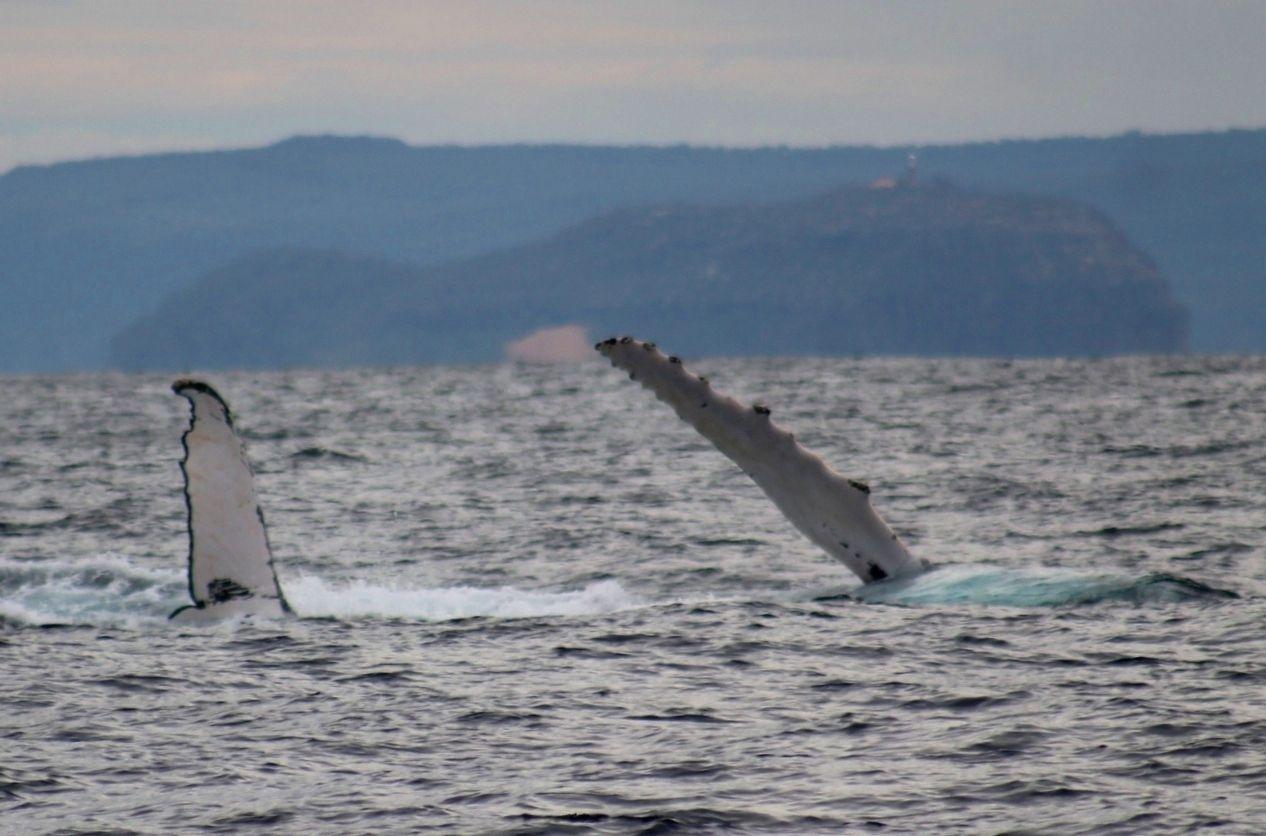
Historic 100-Year-Old Mona Vale Tree To Be Replaced
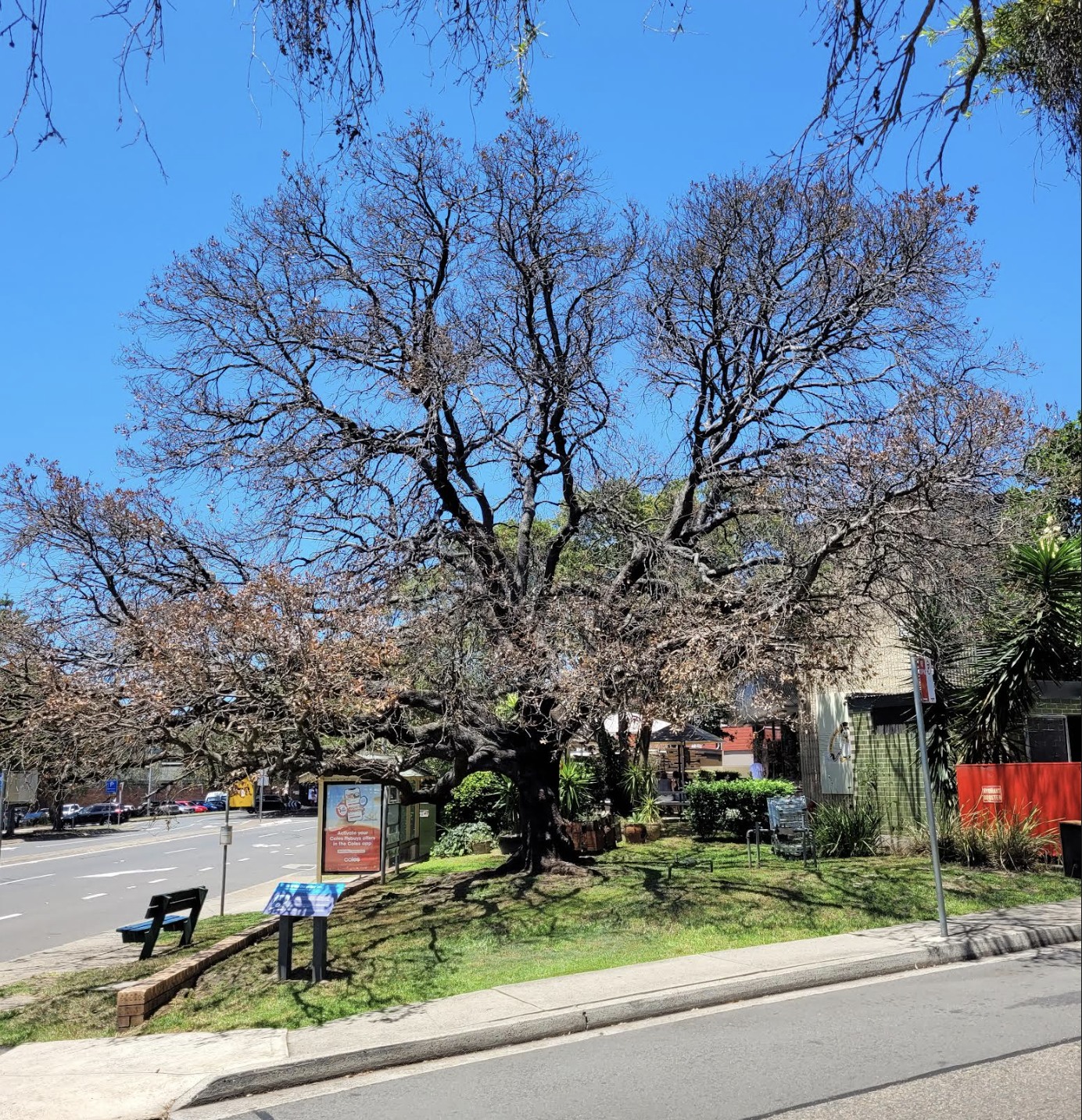
For over 100 years the Mona Vale Victory Tree has stood sentry at the site of the original local Methodist Church on Pittwater Road.
Planted to commemorate the end of World War I and in honour of the many fallen soldiers, the tree has succumbed to Armillaria Root Rot disease.
Armillaria root rot is a disease of trees and woody plants, although it also affects palms, succulents, ferns and other herbaceous plants. This disease is caused by fungi in the genus Armillaria, also known as “oak root fungus,” although the fungus has no specificity for oaks.
Overseas, the disease is reported to be caused by Armillaria mellea. But in Australia a related indigenous fungus Armillaria luteobubalina is the most common cause of Armillaria root rot.
The fungus can spread in several ways, but usually spread is from a woody food base such as an infected tree or stump, or a small piece of infected root.
Most spread is by root contact: the fungus grows from a diseased root into a healthy root via the point of contact of the roots. Rhizomorphs can grow from infected roots through the soil to roots of a nearby plant.
Occasionally, after an infected tree has died, honey-coloured clusters of toadstools grow from the base of the tree. These usually appear from May to July. The toadstools (the fruiting bodies of the fungus) have honey-coloured to deep brown caps covered with scales, whitish gills and yellow to brown stems with a pronounced ring or collar around the upper part of the stem
Airborne spores produced by the toadstools can be another method of spread, although these spores can only infect dead or injured wood.
Situated on private property, Council states it has worked with the property owner trying several treatments to save the tree. Over an eight-month period these treatments, recommended by Sydney’s Royal Botanic Gardens PlantClinic, were tested on the tree without success.
Council announced on Thursday February 8 it is now planning to plant another symbolic tree nearby as they are unable to plant in the same location due to soil contamination.
The century-old Holly Oak (Quercus ilex), an evergreen oak, was one of the remaining few of the original 200 trees planted across NSW under a Methodist Youth program, supplied with the assistance of Mr J H Maiden, Chief Botanist at Sydney Botanical Gardens.
The aim of the planting was for the relatives and friends of those who died to have a place to leave flowers and acknowledge their loved ones in the absence of a grave site.
Council’s Heritage Officer is assisting with guidance on preserving the tree’s heritage value.
The Mona Vale tree was planted in 1920 and became the first place Mona Vale ANZAC Day ceremonies were conducted by students and the community:
The Victory Tree.
To stand as a living expression of gratitude to God for victory in the great war, and to continually remind the youth of Methodism of the ideals for which our soldiers so nobly fought,' the Young People 's Department recently offered to present and forward to every Sunday School in the State a 'Victory Tree,' for planting in school or church grounds. The Department stipulated that applications should be made upon a prescribed form, which stated the conditions of gift, and a copy of which was forwarded to every Sunday School.
Below is a list of the schools ' that have made application for a tree, and to many of these the trees have already been forwarded. Superintendents and teachers are requested to scan the list, and if the name of their school does not appear thereon, to take steps to have an application lodged at the Y.P. Department's Office at an early date.
The trees are beautiful specimens of the kind most suit-able for the districts concerned, and the presentation of them is made possible by the kindness of Mr. Maiden, the Government Botanist: —
SYDNEY DISTRICT.— Rockdale, French's Forest, West Bexley, St. Ives, Bexley, Pymble, Turramurra, Wahroonga, Willoughby, Tempe Park, Bondi, Waverley, Malvern Hill, Chatswood (Central), Mona Vale...The Victory Tree. (1920, June 19). The Methodist (Sydney, NSW : 1892 - 1954), p. 4. Retrieved from http://nla.gov.au/nla.news-article155274628
Summer In Pittwater
Narrabeen Lagoon Entrance Blocked Again
Narrabeen lagoon entrance is blocked again, after recent storm swells, and Council spending $1.5. million on moving the sand south to Collaroy for weeks.
Council announced on Tuesday, 12 September 2023 work to clear Narrabeen Lagoon entrance to reduce the risk of flooding to local homes and businesses.
''Council contractors will excavate more than 20,000 cubic metres (40,000 tonnes) of sand – equivalent to the weight of 100 jumbo jets – to the east and west of Ocean Street Bridge.'' it was stated
The sand is to be deposited at Collaroy-Narrabeen Beach between Goodwin and Stuart Streets.
Works were expected to start in the coming weeks, although the above photo shows they were commenced immediately, and were completed in time for the Summer school holidays, which commenced on December 19 2023. This means the lagoon entrance was open for around 6.5 weeks prior to the big seas which moved so much sand over the past few days of weather conditions as the tail end of Cyclone Kirrily moved south.
After impacting Queensland, ex-Tropical Cyclone Kirrily crossed the border into western NSW on Monday afternoon, February 5, bringing heavy rainfall and flash flooding to inland communities, before reaching Sydney early the next day bringing 21mm of rain and localised flash flooding, along with strong winds.
This had preceded by swell set to peak at 4 to 4.5 metres in Sydney over the weekend of February 3-4.
However, at high tide about 6 inches of water still goes over the top of the entrance and into the lagoon. Joe Mills' (Turimetta Moods) sent in pictures this week of Pelicans standing in the shallow overflow at high tide - see below.
Joe said; ''They are waiting (with the Cormorants and Seagulls as well) for the small fish brought in by the waves.''
So - good for some residents of the lagoon.
A 'catch-up' round of Joe's Turimetta Moods runs Sunday week - Issue 614.
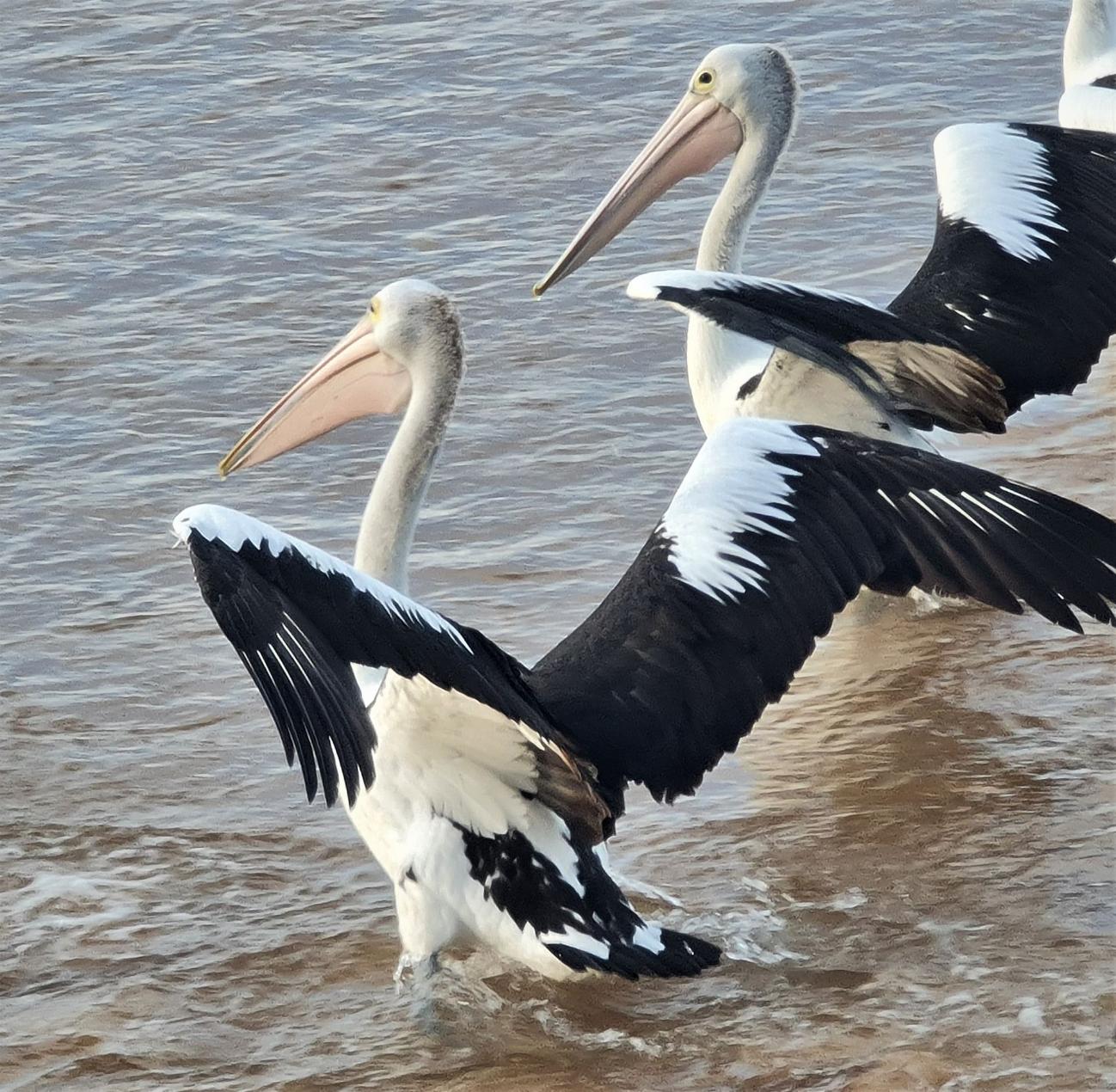
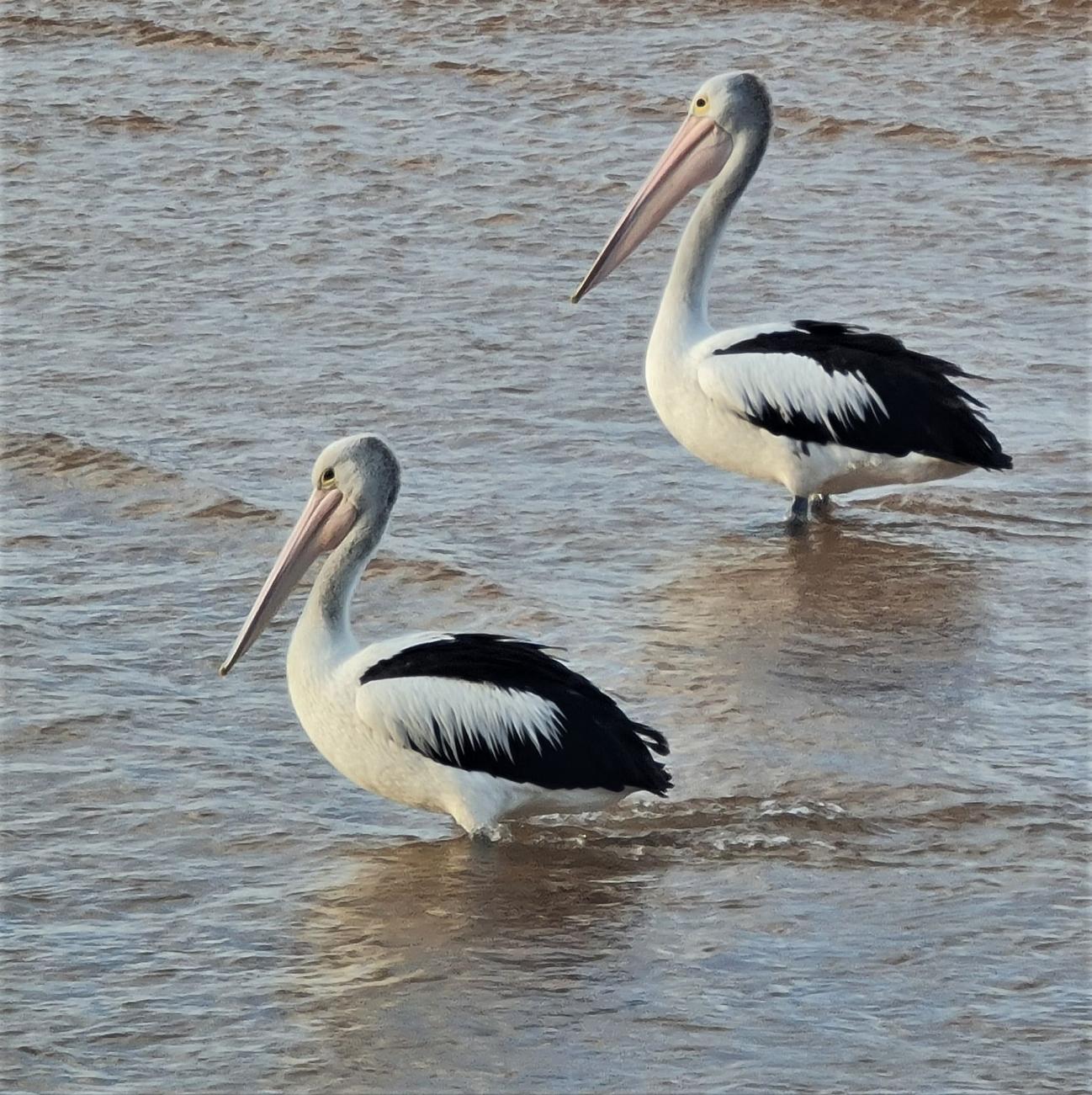
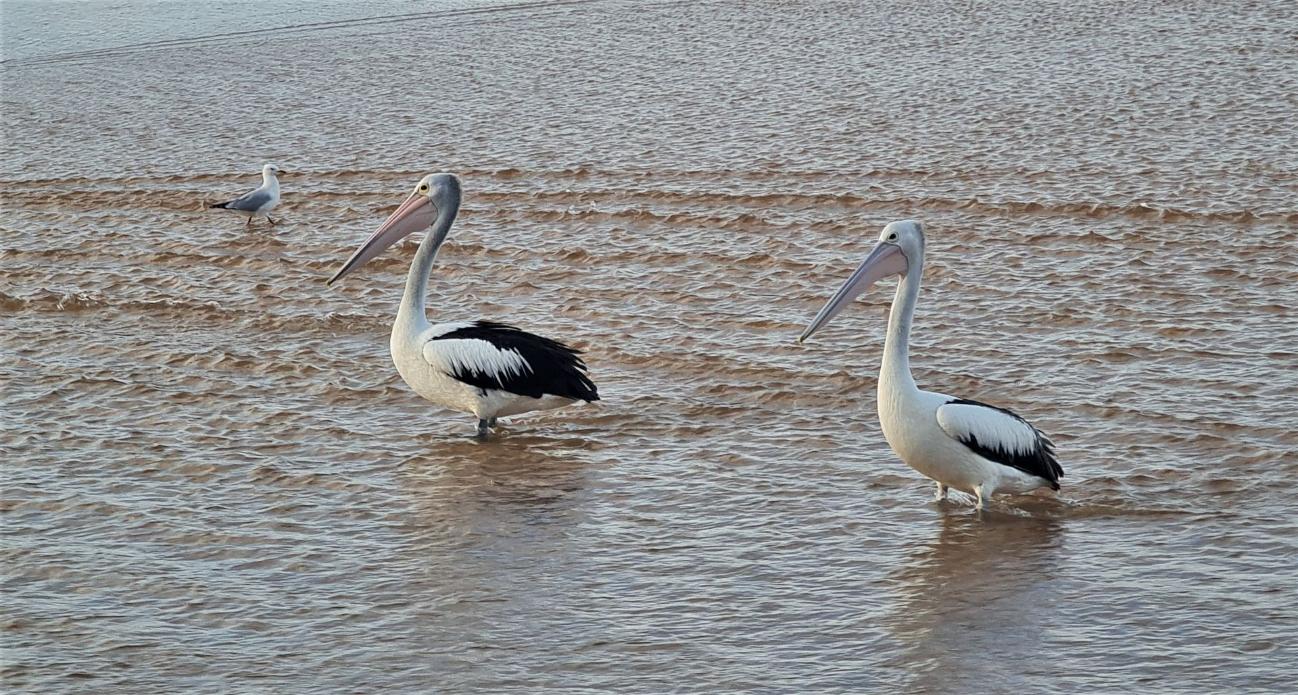

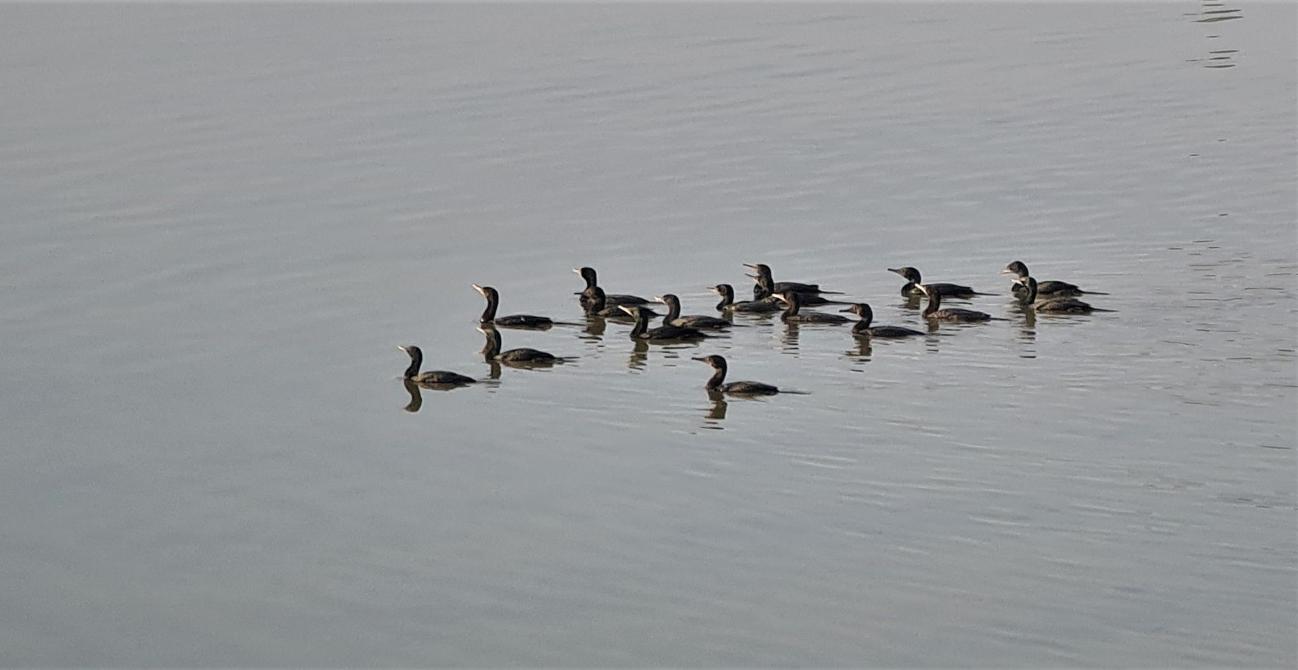
Past Features Archives (pre 2014)
Pittwater Online News was selected for preservation by the State Library of New South Wales and National Library of Australia. This title is scheduled to be re-archived regularly.
Archived Issues (2014 on) may be accessed here: pandora.nla.gov.au/tep/143700
Past Issues are also listed on site on the Community News page, by month.
